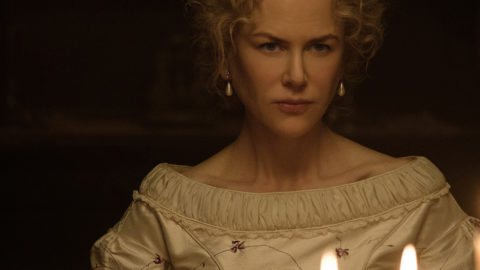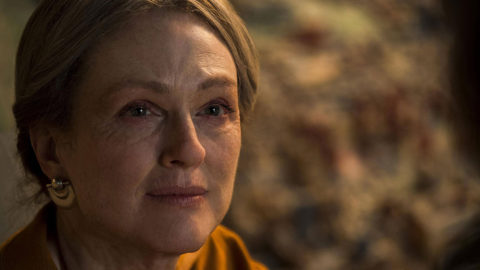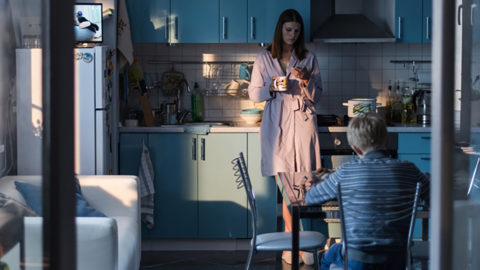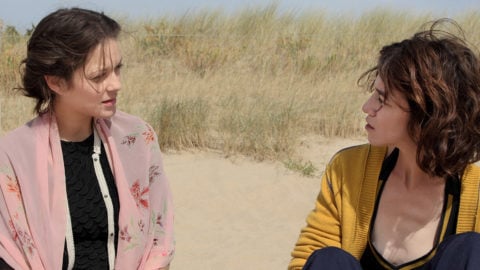Cannes Report #5: Ozon, Iñarritu Goes VR, and Ranking Cannes
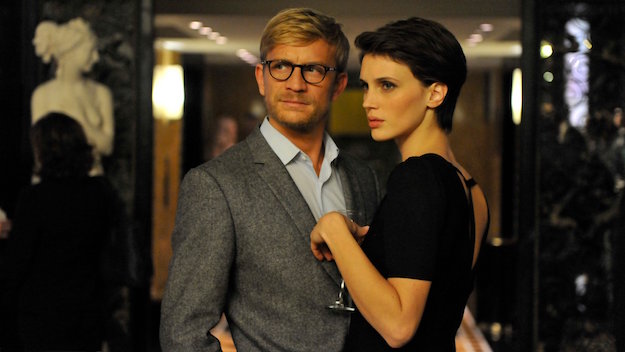
L’Amant double
Near the beginning of L’Amant double, the new film from François Ozon, a young woman (Marine Vacth) visits her gynecologist. Without warning, Ozon cuts to an ultra close-up of female genitalia; the explicit image then slowly dissolves into a shot of a single tear falling from a woman’s eye. The shocking imagery generated a round of applause and laughter from the audience during the film’s premiere on Thursday night, and set the tone for what the director calls his “playful” new movie.
Asked at the film’s press conference on Friday about the graphic opening (a question that provoked a loud laugh from co-star Jacqueline Bisset), Ozon said that he intended the sequence to “convey the inner feelings of the character . . . a strong and powerful image really grips the viewer from the beginning.”
Based on Joyce Carol Oates’s novel Lives of the Twins (written under the pseudonym Rosamond Smith), Ozon’s L’Amant double is a fantastical, steamy sex thriller that gave critics here a much-needed jolt of humor late in this festival. Vacth, who starred in Ozon’s 2013 film Young and Beautiful, plays a woman caught in a pair of passionate relationships with diabolical, identical twins, played by Belgian actor and Dardenne Brothers fixture Jérémie Renier. As the film progresses, it becomes hard to determine how much of the drama is just in her head. In one explicit and strikingly edited sequence, she seems to engage in a ménage à trois with both brothers. Said Ozon: “As a director, it’s interesting to play around with images, to play around with fantasy, dreams, reality, so that the viewer has to wonder what they are seeing. Is this real? Is it all a lie? I love wondering about these things.”
Some early viewers of the film—which opens this weekend in France—immediately likened the movie to work by Brian De Palma. Ozon says he wasn’t thinking of De Palma when he conceived the film, but offered, “I love the way De Palma deconstructs a thriller. I tried to play around with the codes of the genre in this film.”
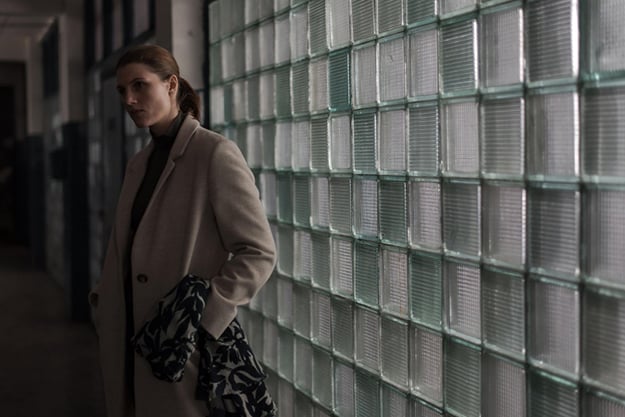
Loveless
An annual morning ritual for many in Cannes is tracking which films are the best reviewed in the festival and therefore most (or least) likely to win the Palme d’Or. Each day, leading international trade journal Screen publishes a survey of critical responses to competition entries, which are given a grade from four to zero stars. With just a few titles yet to be rated (movies by Fatih Akin, Lynne Ramsay, and Ozon), Andrey Zvyagintsev’s Loveless enters the weekend as the highest ranked with 3.2 stars—the only title to crack 3.0—followed by Todd Haynes’s Wonderstruck and Ruben Östlund’s The Square. (The lowest is Jacques Doillon’s Rodin, which clocked in at a measly 0.8 stars.) In recent days, numerous critics and film industry folk complained that this has been a lackluster Cannes for high-profile titles. Enthusiasm for films from Michael Haneke, Yorgos Lanthimos, and Hong Sangsoo seems to have waned a bit since their initial screenings.
At breakfast this morning, the heads of two major film festivals (an American and a European) groused that they couldn’t recall a Screen survey with such low marks. (Last year, Toni Erdmann topped the survey with 3.8 stars and four other films—Paterson, Sieranevada, Graduation, Elle—made it above 3.0.) For one of them, it was a television series that merited the most praise: the return of David Lynch’s Twin Peaks, which screened here on Thursday night, four days after debuting on the United States on Showtime. “It’s the best thing I’ve seen here,” he gushed. (The post-screening response to the show at the Lumière was so ecstatic that it drew tears from Lynch, who reluctantly accepted the ovation from the crowd.)
During a party on Thursday night on the rooftop of the Marriott hotel in honor of Joshua and Benny Safdie well-received competition entry Good Time, starring Robert Pattinson, the head of acquisitions for an American distribution company paused for a brief conversation, using the word “lackluster” to describe the overall selection. At the same time, he praised Agnès Varda & J.R.’s Visages Villages, Claire Denis’s Un beau soleil intérieur, and Sean Baker’s The Florida Project, which all played outside the main competition.
While it’s customary for attendees to adopt negative views in the waning days of a festival—long hours and late nights take their toll—the low critical ratings for this year’s crop of new films, as seen in Screen, have some insiders concerned as they prepare to head back home. “If Cannes gets the best movies of the year and this is the best of the best,” the industry executive noted, “maybe we should be worried.”
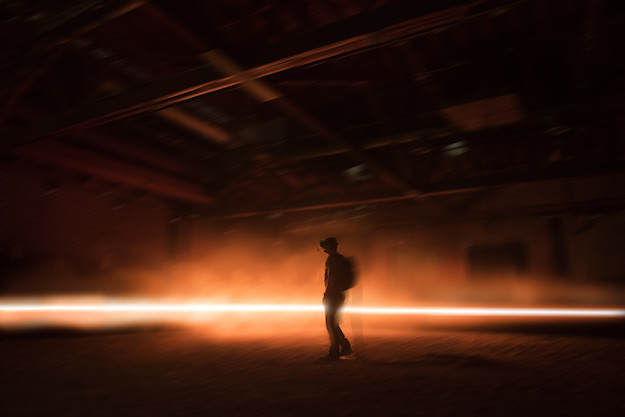
Alejandro G. Iñárritu’s Carne y Arena (Virtually Present, Physically Available)
Further afield, a new VR experience from Alejandro G. Iñárritu drew select festivalgoers to a nearby airport hangar. Carne y Arena (Virtually Present, Physically Available), an immersive feature-length experience that includes a VR movie and an installation, was absolutely worth the 15-minute car ride.
Backed by Legendary Entertainment and Milan’s Fondazione Prada, Carne y Arena is the first VR project ever chosen for official selection in Cannes. After being faced with a large border wall, the viewer enters a chamber and is asked to remove shoes and socks and wait for a signal before entering an even larger space, covered with sand. There, two operators outfit the viewer with a headset and earphones. The following nearly seven-minute VR film depicts a journey through the desert by a group of immigrants, who are captured while trying to cross the border from Mexico into the United States. After the film, the solitary viewer enters a long dark hallway that features short video installations introducing the real-life Latinos who inspired the story and depicting the struggles they face as immigrants today.
“During the past four years in which this project has been growing in my mind, I had the privilege of meeting and interviewing many Mexican and Central American refugees,” explained Iñárritu in a statement accompanying the experience, which is a collaboration with producer Mary Parent, DP Emmanuel Lubezki, and ILMxLAB. “Their life stories haunted me, so I invited some of them to collaborate with me on the project. My intention was to experiment with VR technology to explore the human condition in an attempt to break the dictatorship of the frame—within which things are just observed—and claim the space to allow the visitor to go through a direct experience walking in the immigrants’ feet, under their skin, and into their hearts.”
An extended version of the piece will open next month at Fondazione Prada and continue through December.
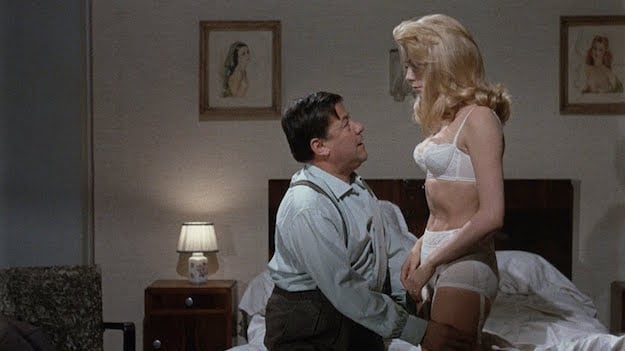
Belle de Jour
As always, complementing the festival’s Official Selection is the Cannes Classics sidebar, the annual showcase of new restorations of older films, as well as a handful of cinema-focused documentaries. Among the selections this year have been Henri-Georges Clouzot’s The Wages of Fear; Michelangelo Antonioni’s Blow-Up; Lebanese filmmaker Georges Nasser’s Ila Ayn; a screening of 1981 Palme d’Or-winner Man of Iron in honor of its late director, Andrzej Wajda; and a double bill of Max Ophuls’s The Earrings of Madame de… and Luis Buñuel’s Belle de Jour inside a theater that bears Buñuel’s name.
Film Comment chatted with Cannes Classics head Gérald Duchaussoy in his small office on the fifth floor of the Palais des Festivals. Duchaussoy noted that the goal of Cannes Classics is “to defend the legacy of cinema, to try to have it fit into Cannes.”
Duchaussoy also collaborates with Cannes festival chief Thierry Frémaux at a festival each fall in Lyon, where Frémaux lives. Films from this year’s Cannes Classics will travel there and to other venues.
In a festival where most of the focus is on new movies, Duchaussoy says that he and Frémaux are hoping to instigate a dialogue between the past and the present of cinema:
“You can’t really understand the future without having a foundation in the past.”



